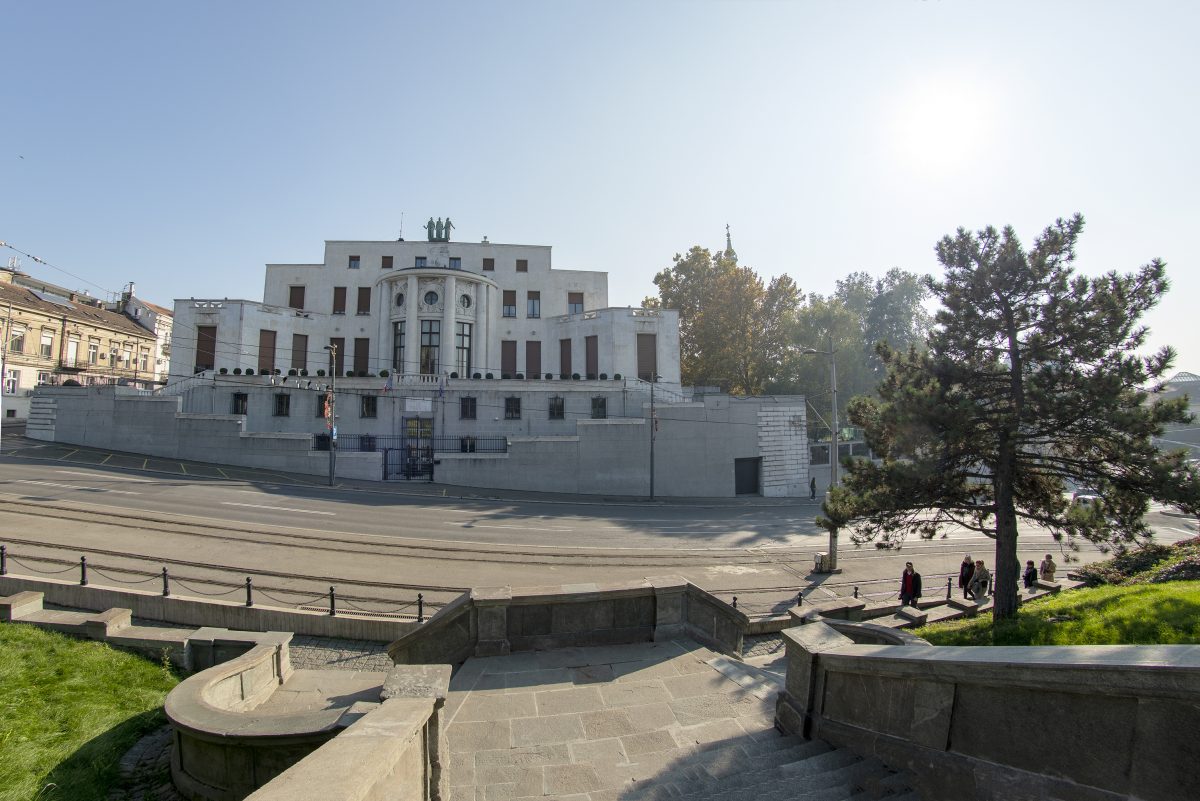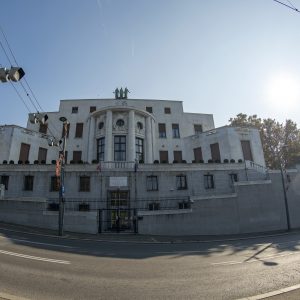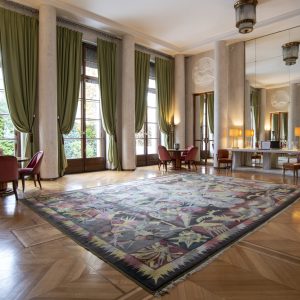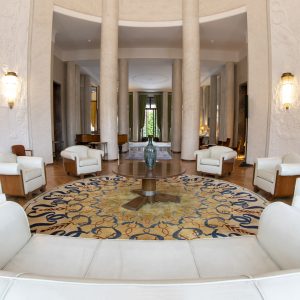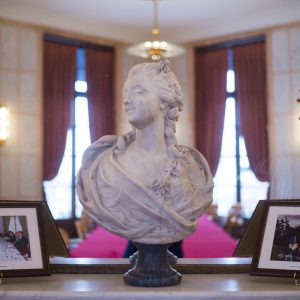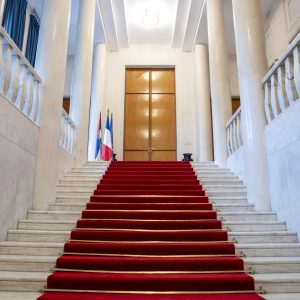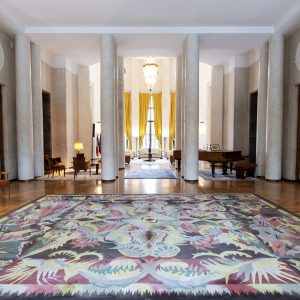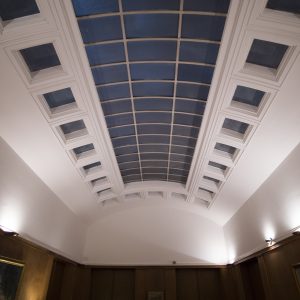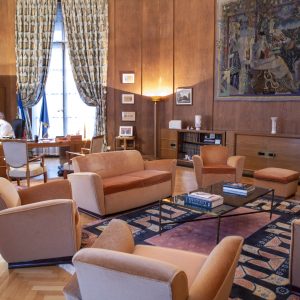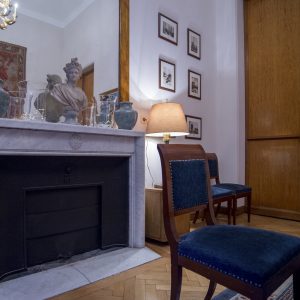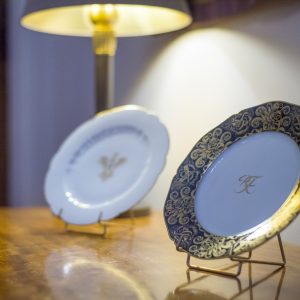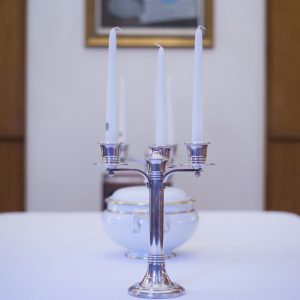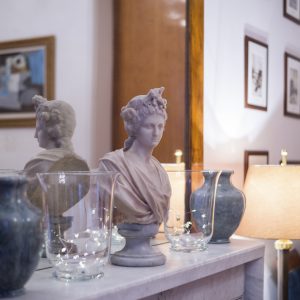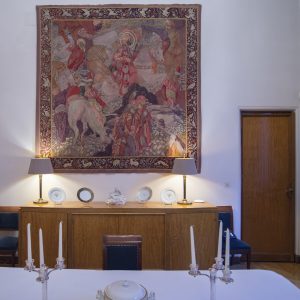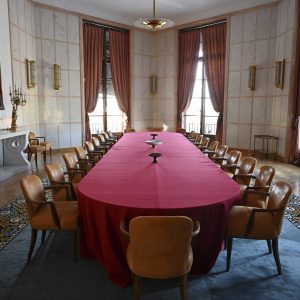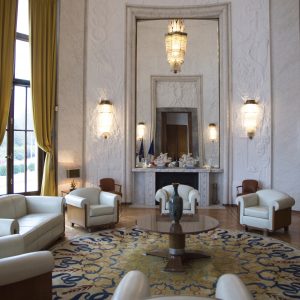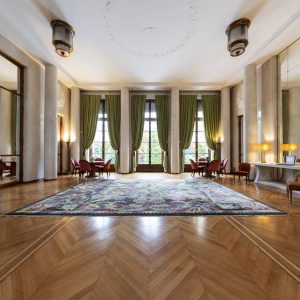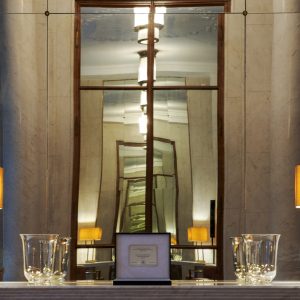Is among the most beautiful and best-preserved art deco palaces in the world
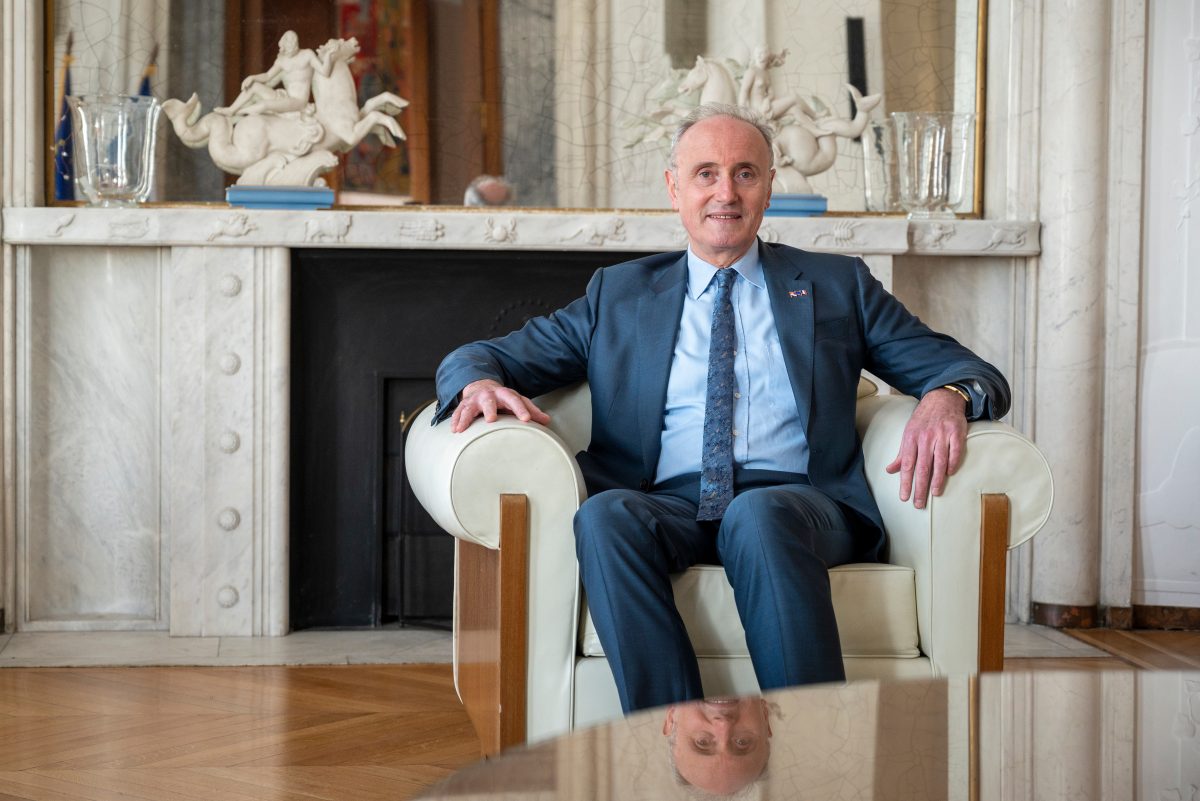
“How fortunate you are to live and work in such a beautiful place”. This is what I am told by almost everyone who visits the French embassy in Belgrade.
Indeed, I am. The French embassy is Serbia is not only one of the most beautiful embassies in Belgrade, but is among the most beautiful and best-preserved art deco palaces in the world. It has miraculously survived not only tumultuous historical events and natural decay but also new fashion trends in design and changes in ways people live and work.
The embassy is one of very rare examples when the French government decided to buy a land unit and construct an entirely new building to host its diplomatic mission and its residence instead of renting existing houses. It was a political decision.
The construction of the embassy was a strong symbol, a deliberate act to acknowledge the friendship and the alliance forged in the Great War, when Serbian soldiers fought with the French on the battlefields of the Oriental front. Through its beauty, grandeur and realisation, it reflected the importance given to the relation between the two countries. It was also meant to show the world the exquisiteness of French design, craftsmanship and modernity.
Its construction and decoration took seven years, between 1928 and 1935. On the construction site, an army of French and domestic builders, artists and craftsmen worked under the supervision of the architect Roger Henri Expert, a master of art deco style. He managed to bring the finest French designers of furniture, textile, carpets, tapestries, lamps like Devèche, Ruhlmann, Leleu, manufactories like Sèvres, Aubusson, Gobelin, Bagues…
I am very proud to say that most of their original furniture is still here and that I am living and working in a kind of a museum where every object has its place and function, but is also extremely sophisticated and beautiful.
The Embassy is continuously renovated, while pieces of furniture are meticulously restored in Paris and sent back to Belgrade
As you may know, cultural heritage in France is well taken care of. Both the government and public opinions consider that our cultural heritage is very important and worth every effort. The Embassy is continuously renovated, while pieces of furniture are meticulously restored in Paris and sent back to Belgrade. In this regard, we recently got back a piece of nice floral carpet, Leleu chairs and an original piano stool, next to which we exposed an 80 years old photograph from the thirties where you can see them in situ.
The five-story building, in white marble from the Vencac quarry, with a protruding rotunda and a large terrace, decorated with allegoric motives and bas-reliefs which highlight major French history events. The facade is topped by a 2m80 bronze sculpture of three women symbolizing Liberty, Equality and Fraternity, the French national motto. The sculpture, as well as the majority of the bas-reliefs inside the residence, are the work of Carlo Sarrabezolles, whose taste for classicism marvellously complemented art deco.
Art Deco is all about beauty in every detail but also – and importantly – functionality
Inside the residence, you will find spacious reception halls, dining rooms, several salons, many guest rooms, all furnished with the same sophistication and attention to detail. The furniture is all made of precious materials dear to Art Deco: mahogany, elm burl, black pear, rosewood…
The major reception hall is very spacious, separated by three pairs of imposing marble columns which can be found in many designs of Roger Henri Expert, like on the famous transatlantic liner “Normandie” which was inaugurated the same year as the Embassy. On the upper walls, four stucco medallions represent French rivers, the Loire, the Garonne, the Seine, the Rhine and the Rhône. Beneath and all around the room, large mirrors, covering doors or mouned on mantlepieces are reminiscent of the Hall of Mirrors in Versailles. Towards the Kalemegdan Park, the 11-meter-high rotunda is decorated with an elaborated stucco “carved tapestry”, as Expert had called it. Among a multitude of symbols of France, we can see the flying carriage of the goddess of Victory, as well as 1789, the year of the French Revolution.
The dome ceiling, decorated with symbols of the four elements, hosts an imposing chandelier in bronze and crystal of Baguès. It’s important to note that Art Deco is all about beauty in every detail but also – and importantly – functionality. The maintenance of this huge chandelier was made easier by a clever crank system which brings it to ground level, still in use and dating from the 1930s.
Cultural heritage in France is well taken care of
In order to combine new technologies and advantages of modern times with aesthetics, Expert applied a series of very ingenious solutions throughout the building. For example, it has central heating, but without radiators, considered ugly at the time. There are also seven fireplaces, all in function and all different. The largest one, in the rotunda, has zodiac sign ornaments on it.
Expert, who designed luxurious transatlantic liners, such as the Normandie, mastered the art of bringing natural light and ventilation to every space. Therefore, the residence has many round windows and a lounge called “Paquebot” (Steamer) with zenithal lighting through glass boxes ceilings, a technique frequently used to bring light to lower decks.
The residence has two gardens and a lovely view, on one side on Saborna crkva and on the other, on Kalemegdan park, Sava and the Danube, especially beautiful at sunset.
